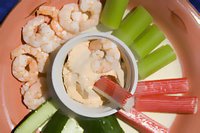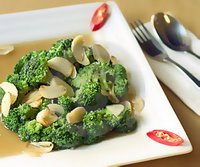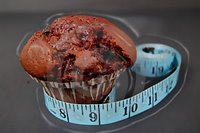10 Guilt-Free Ways to Satisfy Your Sweet Tooth
 Many of us work very hard to eat healthy meals, but struggle with the urge for candy, cookies, cakes, ice cream and anything else full of sugar and sweetness! If you're trying to lose weight or maintain a healthy weight, this can be a problem. Denying oneself all things sweet can turn into a disaster when willpower runs out.
Many of us work very hard to eat healthy meals, but struggle with the urge for candy, cookies, cakes, ice cream and anything else full of sugar and sweetness! If you're trying to lose weight or maintain a healthy weight, this can be a problem. Denying oneself all things sweet can turn into a disaster when willpower runs out.As is true in most things in life, moderation is the key. There are plenty of options out there that, when eaten in sensible portions will satisfy your sweet tooth and help to avoid dessert binges when you have a weak moment. You'll get an added bonus when you eat some of the fruit desserts - vitamins and fiber!
Try substituting these 'mini-desserts' for full-blown desserts and you'll see your cravings leveling off, you'll start feeling satisfied on less, and even better, you might just drop a few pounds:
* 3 regular Hershey's kisses
* 1 'snack-size' cup of fat-free pudding (even add a dollop of light whipped topping)
* A slice of angel food cake with sliced fresh berries and light whipped topping
* 2 vanilla sandwich cookies
* 1 frozen all fruit juice bar
* 1 reduced fat fudgesicle
* 1 frozen orange-cream bar
* Fresh berries with a pinch of sugar and low-fat nondairy creamer
* 1 cup of reduced fat vanilla ice cream with sliced fresh peaches
* Fruit parfait: Layer fresh berries, a light drizzle of chocolate syrup, and light whipped topping. (Optional: add chunks of angel food cake, gingersnaps, graham crackers or animal crackers)
* 1 'snack-size' cup of fat-free pudding (even add a dollop of light whipped topping)
* A slice of angel food cake with sliced fresh berries and light whipped topping
* 2 vanilla sandwich cookies
* 1 frozen all fruit juice bar
* 1 reduced fat fudgesicle
* 1 frozen orange-cream bar
* Fresh berries with a pinch of sugar and low-fat nondairy creamer
* 1 cup of reduced fat vanilla ice cream with sliced fresh peaches
* Fruit parfait: Layer fresh berries, a light drizzle of chocolate syrup, and light whipped topping. (Optional: add chunks of angel food cake, gingersnaps, graham crackers or animal crackers)
Eat slowly, savor each bite and I think you'll find that these small portion, healthier alternatives will surprise you with their ability to tame the cravings and help you stay on a healthy eating program.




